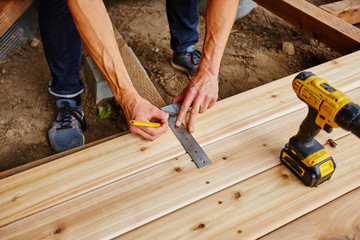Commercial Roof Repair Suffolk is a necessity for business owners. Damaged roofing can lead to water leaks, mold growth, and structural weakening of the building.
Taking action to address issues like leaks, damaged membrane, open laps, and drainage system problems prevents costly repairs down the road. However, many misconceptions about commercial roof repair cause building owners to delay or neglect necessary maintenance.
Leaks are one of the most challenging issues to deal with in commercial roof repair. They can damage your building and the inventory or equipment inside it, and they’re not always easy to identify. But if you know what to look for, leaks can be identified and addressed before they cause extensive, costly damage.
The most common cause of commercial roof leaks is weather damage. Heavy rains, snow, hail, strong winds and exposure to extreme temperatures can weaken roofing materials over time, leading to cracks and holes in the roof membrane. These gaps leave the insulation exposed, increasing the risk of water infiltration and other problems. Regular inspections and roof maintenance help prevent weather-related leaks by patching leaky areas, repairing cracks and sealing vulnerable points.
In addition to allowing water infiltration, leaks can also cause drywall and ceiling damage. Water-soaked drywall can warp or crumble, and paint may bubble or flake. If you notice these signs, it’s important to call in a professional for a commercial roof inspection. A professional can repair drywall and ceiling damage, and they can also identify the source of the leak and recommend a course of action.
Another common issue that leads to commercial roof leaks is improper installation of rooftop equipment. Many commercial buildings install equipment like advertising signs, satellite dishes and HVAC vents on their roofs. The screws used to fasten these items can penetrate the roof membrane, and rainwater can seep into the screw holes and clog the insulation or the roof deck below. Regular roof inspections and proper installation of equipment can help prevent this problem.
Other common leak sources include faulty gutters, drains and downspouts, roof ventilation, and age and wear. Regularly cleaning the roof drains and gutters helps prevent clogging and leaks. Also, make sure that only authorized personnel are allowed on the roof to reduce the risk of accidents that could lead to damage or leaks. Finally, aging and wear can cause sealants to dry out or crack, making them less effective at protecting the roof membrane.
Damage
Damage in commercial roof repair is a concern because it can compromise the integrity of the building and the equipment inside. As a result, repairs are often a matter of urgency. This is especially true when severe weather or other conditions cause the damage, as they can lead to serious consequences like structural weakening and mold growth.
Water leaks, cracking, and sagging are common signs of roof damage that require immediate attention. Whether due to age, severe weather conditions, or improper installation, these issues may impact the structural integrity of the roof and lead to expensive damage elsewhere in the building.
Other common commercial roof problems include shingles that are missing or loose, as well as granule loss from the roof surface. These issues can lead to the formation of leaks, and they can also expose the underlayment and roof membrane to the elements, which can damage them.
In addition, the presence of mold or mildew on the roof or in the interior of the building can indicate moisture infiltration through the commercial roof. These fungi thrive in damp environments and can cause health problems for occupants and deteriorate building materials.
Roofing experts should conduct regular inspections of the roof to identify potential problem areas and take the necessary steps for repair. They should also be able to identify underlying causes of the damage, which could include drainage issues, issues with mechanical equipment, or even improper maintenance of the roof.
Commercial roofs have a shorter lifespan than residential roofs, so they are more prone to damage over time. A damaged commercial roof can lead to costly water damage and loss of valuable inventory or equipment. As a result, it is important to invest in routine maintenance and repairs.
Commercial roofing requires specialized knowledge and expertise to maintain, repair, and replace. It is critical to understand the differences between commercial and residential roofing, including nuances of installation, materials, and insurance claims. This information will help business owners manage their investments and protect the safety of their occupants, assets, and inventory. With proper care and routine inspections, businesses can extend the lifespan of their commercial roofs and avoid costly repairs down the road.
Misconceptions
It’s important for business owners to separate fact from fiction when it comes to commercial roof repair, maintenance, and replacement. Misconceptions often lead to expensive mistakes or neglected repairs, and understanding the truth behind common misconceptions can help ensure a building’s roofing system remains in good condition for years to come.
One of the most significant commercial roof repair misconceptions is that it’s okay to ignore minor damage or wait until a problem occurs before having an inspection and making a repair. It is essential for building managers to follow a preventative roofing schedule and have regular inspections to catch small problems before they become serious.
Many common roofing issues are invisible from the ground, including deteriorated underlayment and damaged flashing. A professional roofer can examine the interior of a roof to determine the cause of these hidden problems and make necessary commercial roof repair. Other issues that can be difficult to see include ponding water, which can cause the roof to deteriorate and lead to leaks, or blown-off debris from improper installation. Professionals can correct these issues by installing gutters and drainage points, adding slope to the roof surface with “crickets,” or implementing other solutions. If these issues are not addressed promptly, they can result in extensive and costly building damage.
Insurance
Often, commercial roof repairs and replacement are managed by working with insurance companies. Understanding the insurance process, how to document emergencies, and partnering with a roofing company who understands insurance can significantly reduce repair costs and impact to business operations. Whether it is storm damage, a clogged drain, or other commercial roofing emergency, the best course of action is to contact an experienced contractor who can provide quick and reliable service. They also offer strong warranties to protect the investment.


